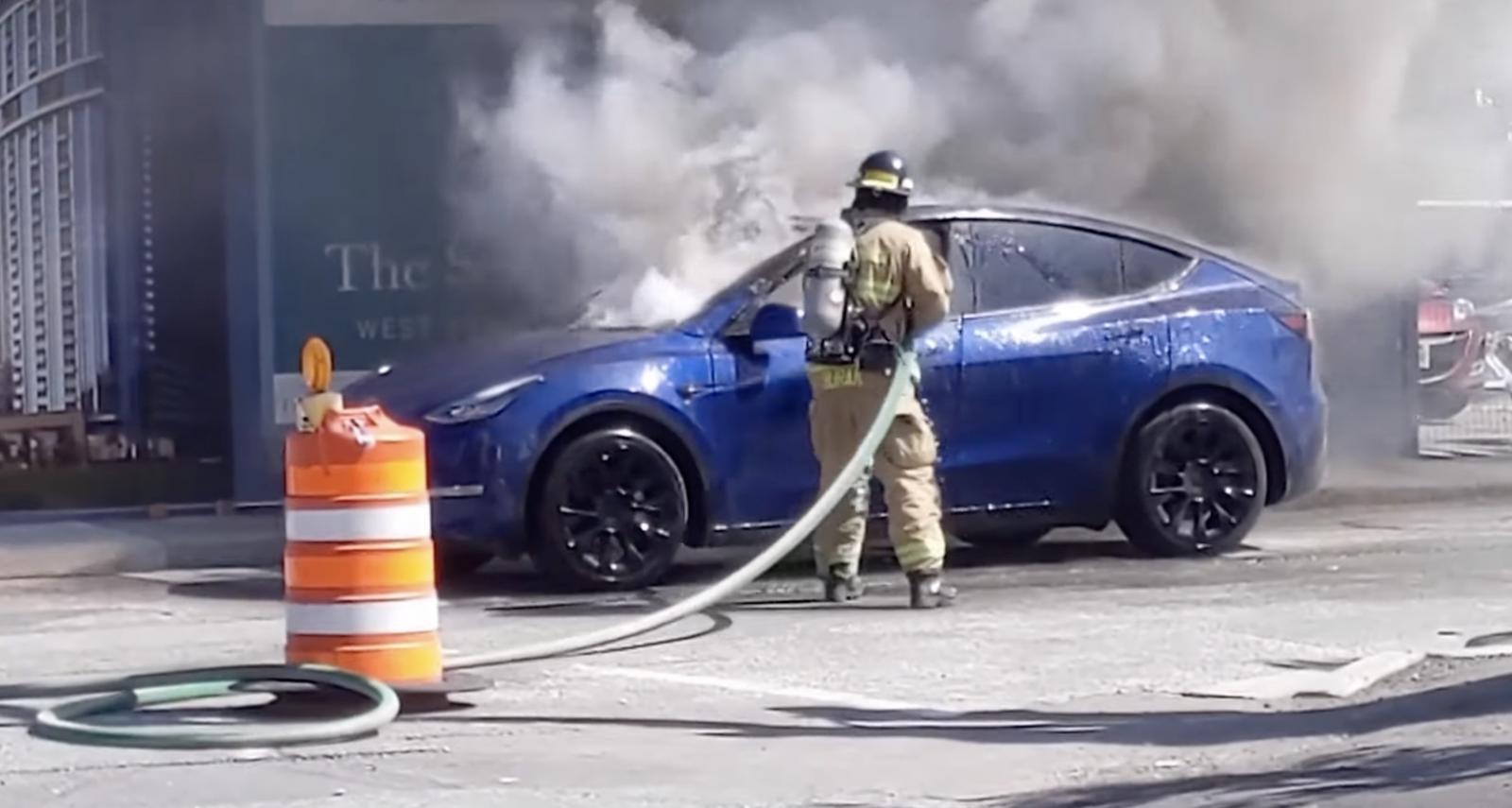Heat build-up can be a serious issue with electric vehicles (EVs), and by that, we mean the potential for fire. As more and more EVs hit the road, from every car-making country on the planet, one often overlooked danger is the fire risk from parking all those energy-packed batteries together in an enclosed space, like a garage.
In fact some underground car parks in South Korea have placed bans on fully charged EVs due to the risk of fire. This ban stems from a recent fire involving an electric vehicle. On a slightly different note, in certain tower parking structures in Japan, bans have been placed on certain EVs due to the potential of falcon wing doors on the Tesla Model X to unexpectedly open inside the structure causing significant damage to car parks and cars.
Back to electric vehicle fires now. EV fires last longer, are harder to put out and have a tendency to reignite — a major concern for underground parking garages, maintenance facilities and bus depots.
One fact that’s hard to ignore is that transportation agencies nationwide are transitioning to all-electric fleets. Yet they’re not really prepared with the proper facilities to maintain them, says William Connell, senior vice president at WSP, a leading design, engineering and construction firm.
Whether renovating old parking structures or designing new ones, there’s very little guidance on how to prevent a worse-case scenario: hundreds of electric cars or buses going up in flames.
“What’s really caught everybody a little bit off guard in this, is that the regulatory codes and standards on fire risk management haven’t been able to react quickly enough,” says Connell.
Without becoming too paranoid about EV fires, they are rare. Experts say they occur less frequently than fires in cars with traditional internal combustion engines, although more research is needed. Most vehicle fires occur on the road, but those in parking garages can cause huge economic losses — damaging structures and destroying dozens of other vehicles in some cases.
The danger extends to cargo ships packed with EVs, too: One vessel carrying more than 3,000 cars caught fire and sank in 2022 after an EV battery malfunctioned aboard.
“Thermal runaway” is the scary-sounding euphemism for what happens in an EV fire: one battery cell short-circuits, and the resulting fire spreads uncontrollably to others. A single cell inside an EV’s lithium-ion battery can be damaged in a crash, or even by spikes of lithium called dentrites that build up inside the battery over time. The resulting chemical reactions allow EV fires to reignite hours or even days after they appear to have been extinguished.
CARLIST THOUGHTS
One statistic that surprised me was the comparison of the amount of water or foam needed to extinguish a car fire. In a standard internal combustion car fire, around 1,400 litres of water or foam are required to fully put out the fire. In contrast, about 30,000 litres of water or foam are needed to extinguish an EV fire. The best solution, says Connell, would be to smother a burning EV with a suppression blanket, tow it from the garage and watch it burn. Pretty radical but I guess you’d save a lot of water while polluting the surrounding air at the same time.
